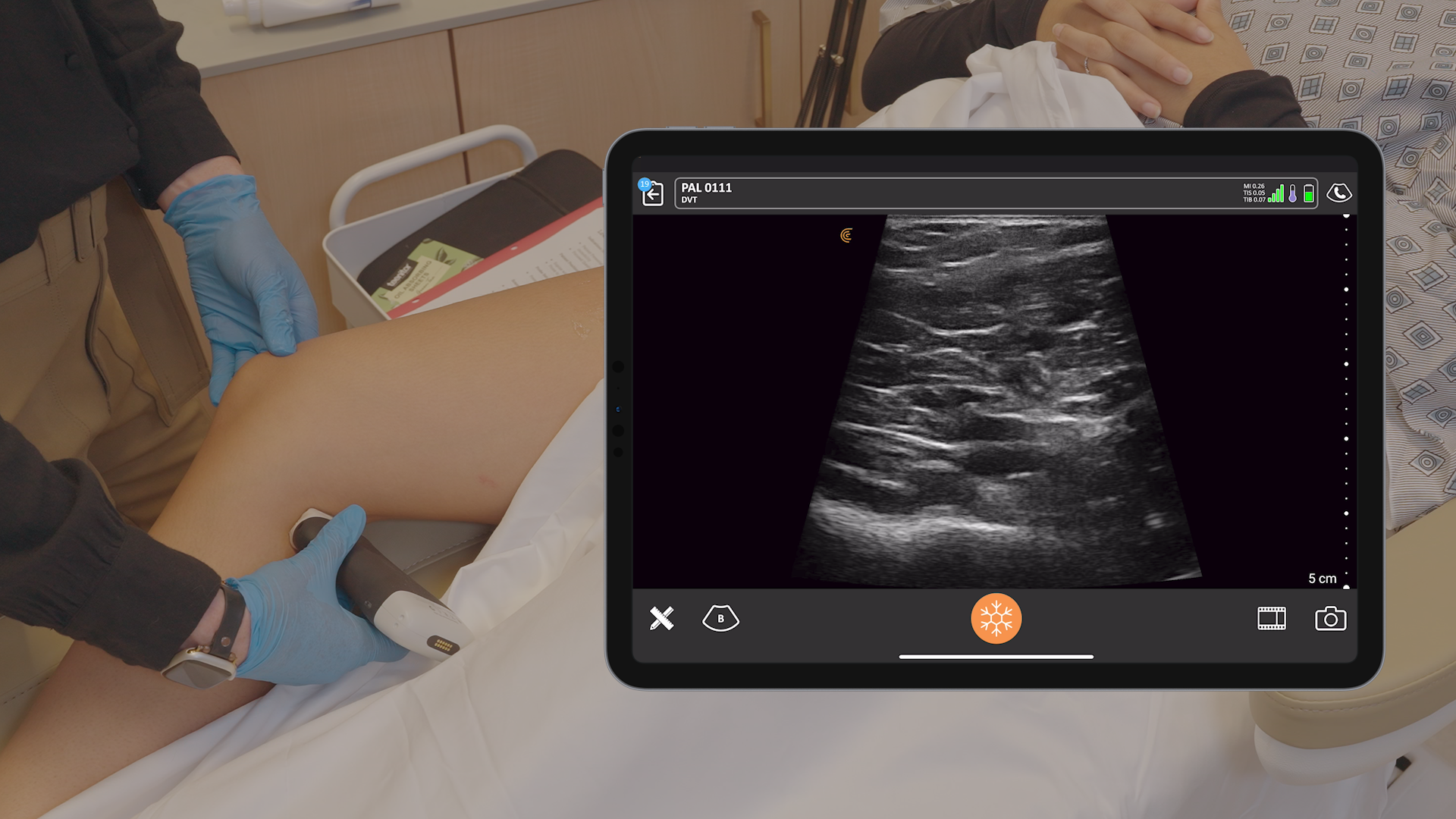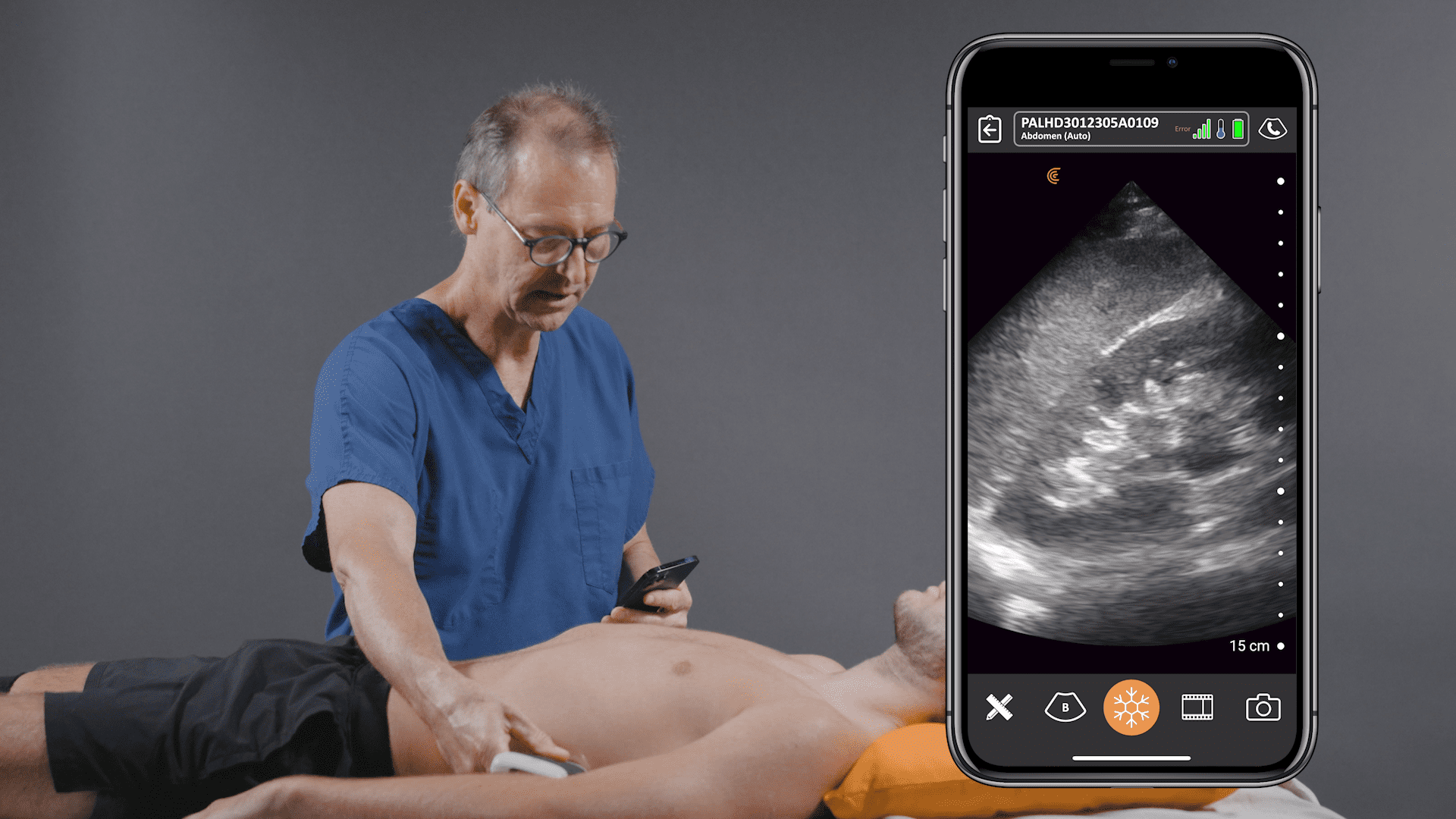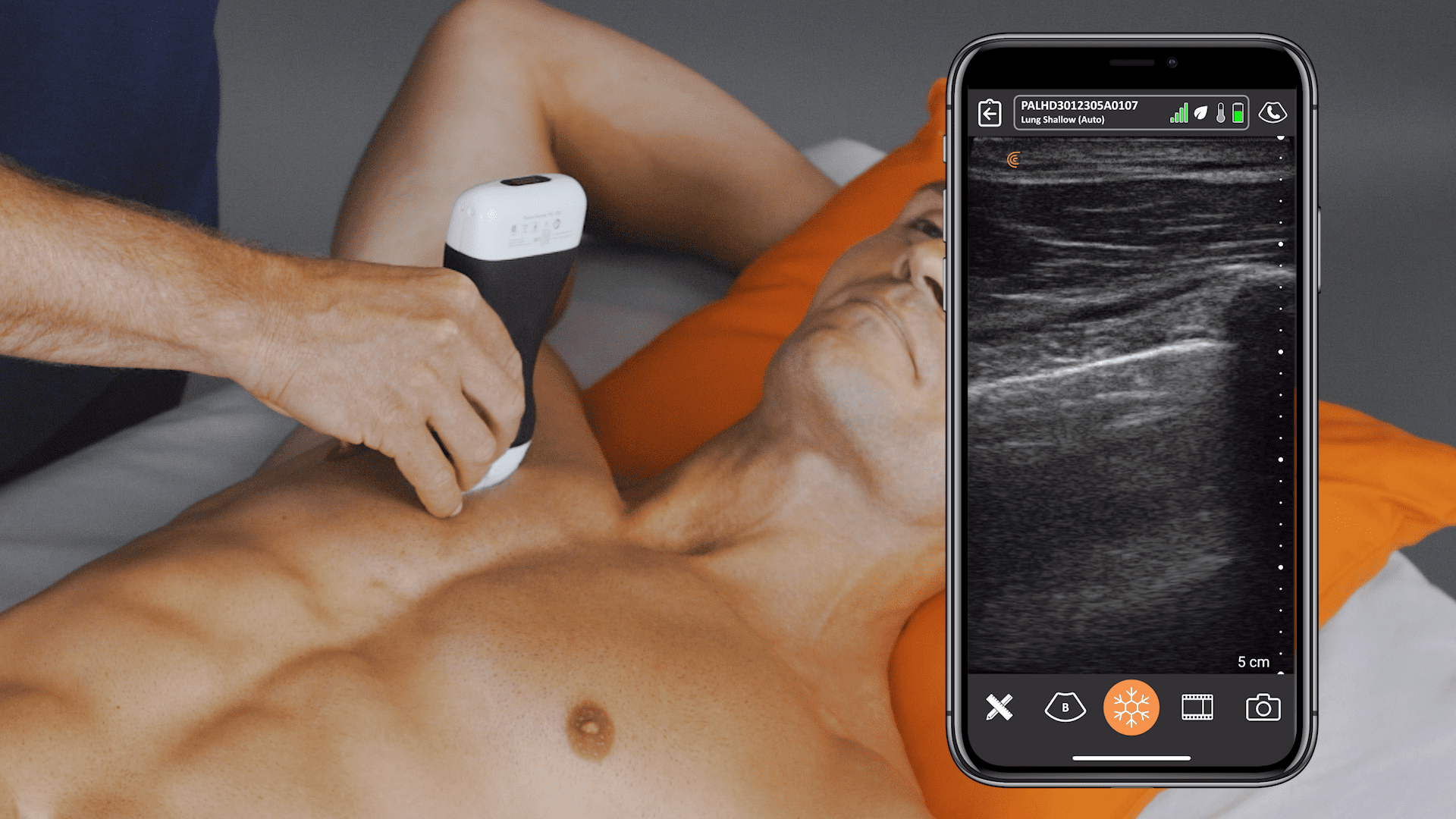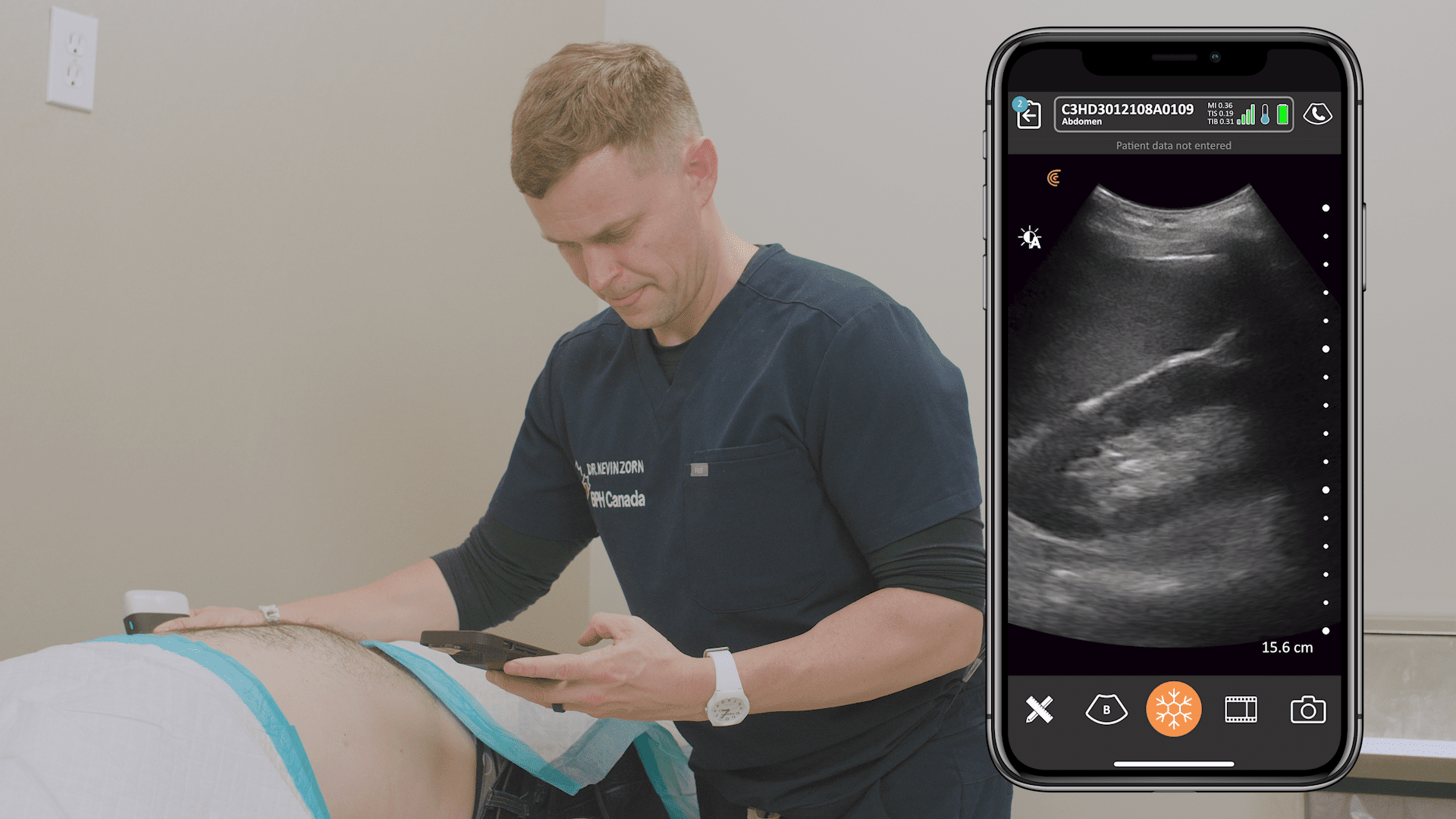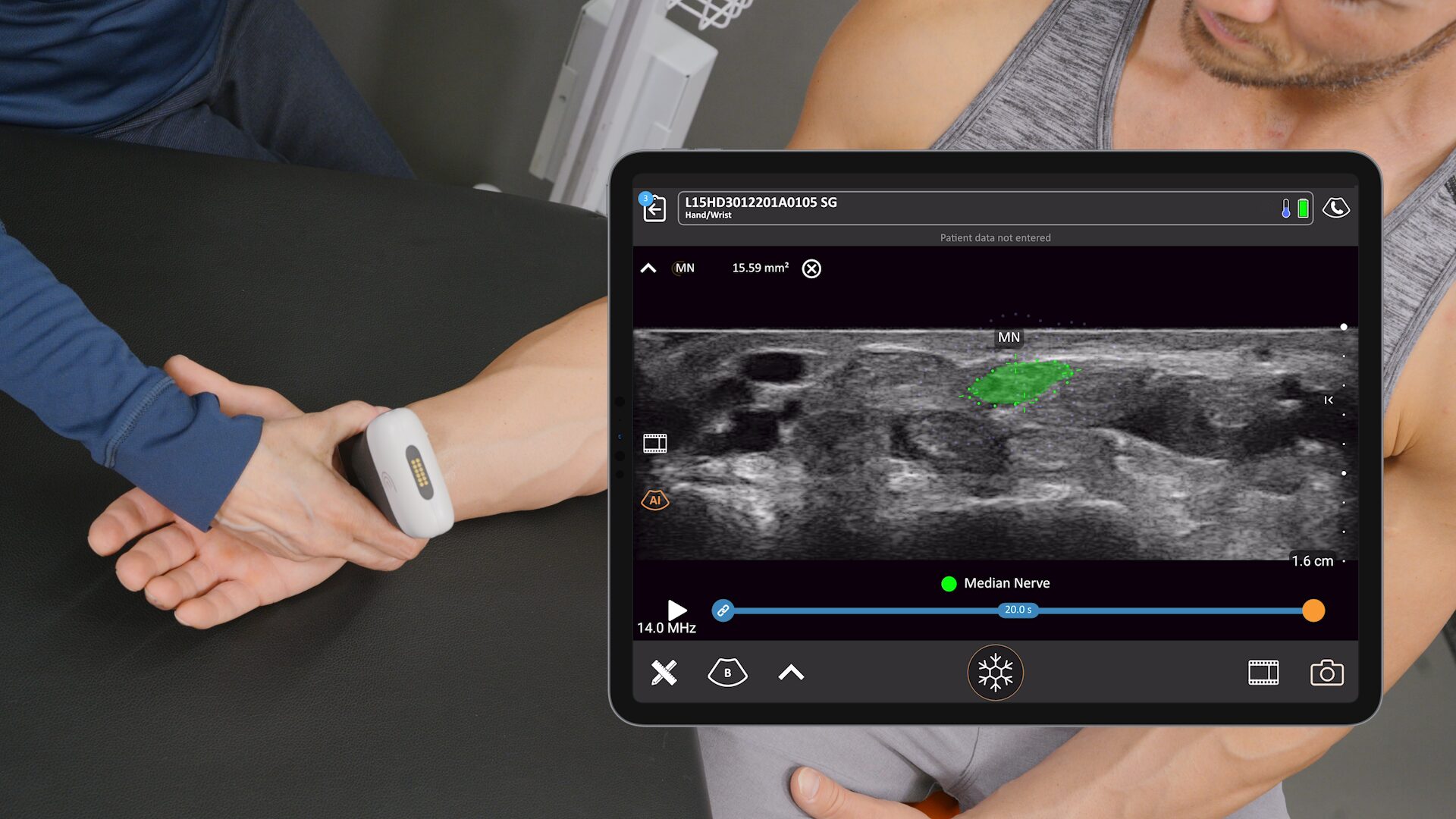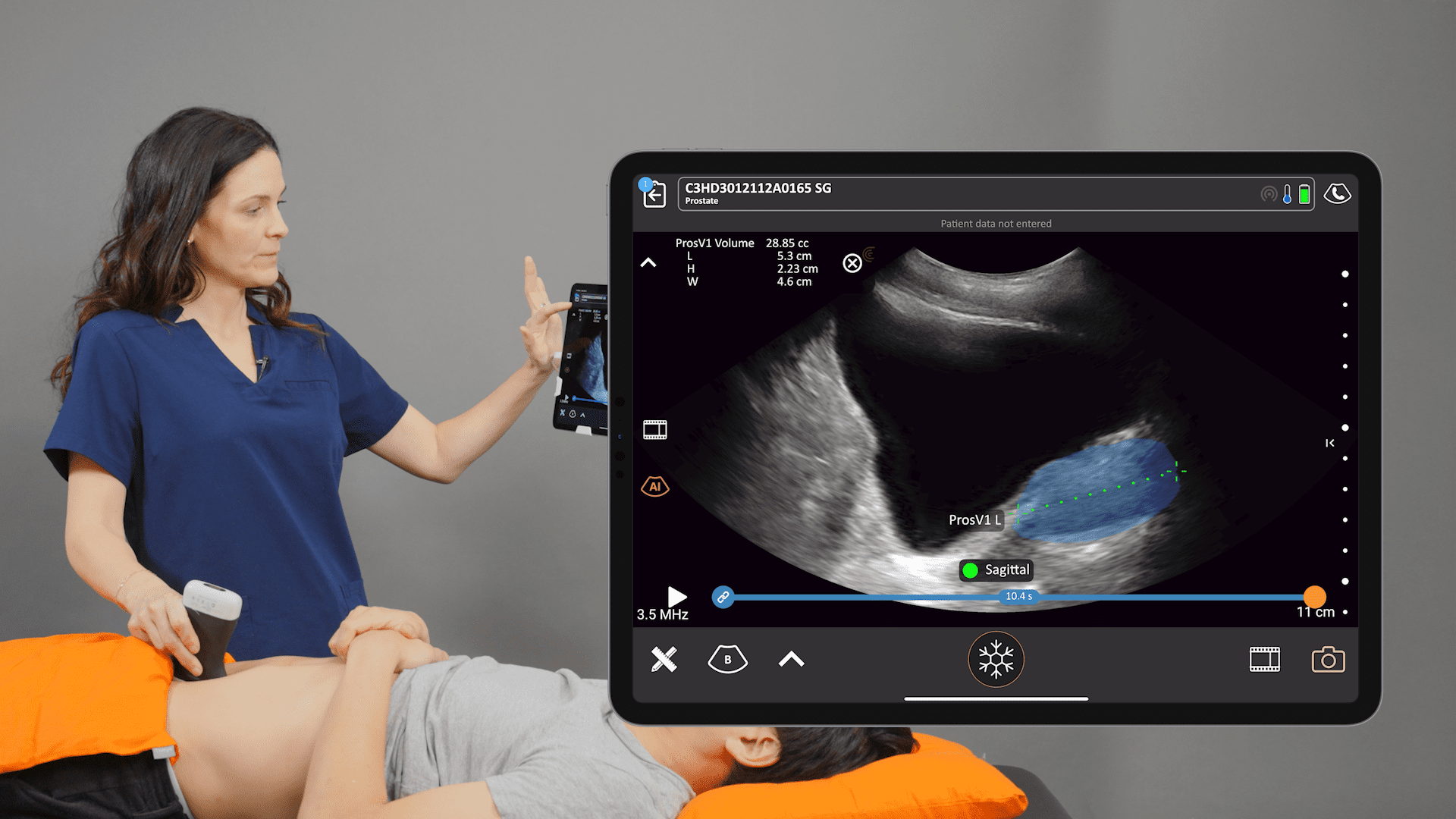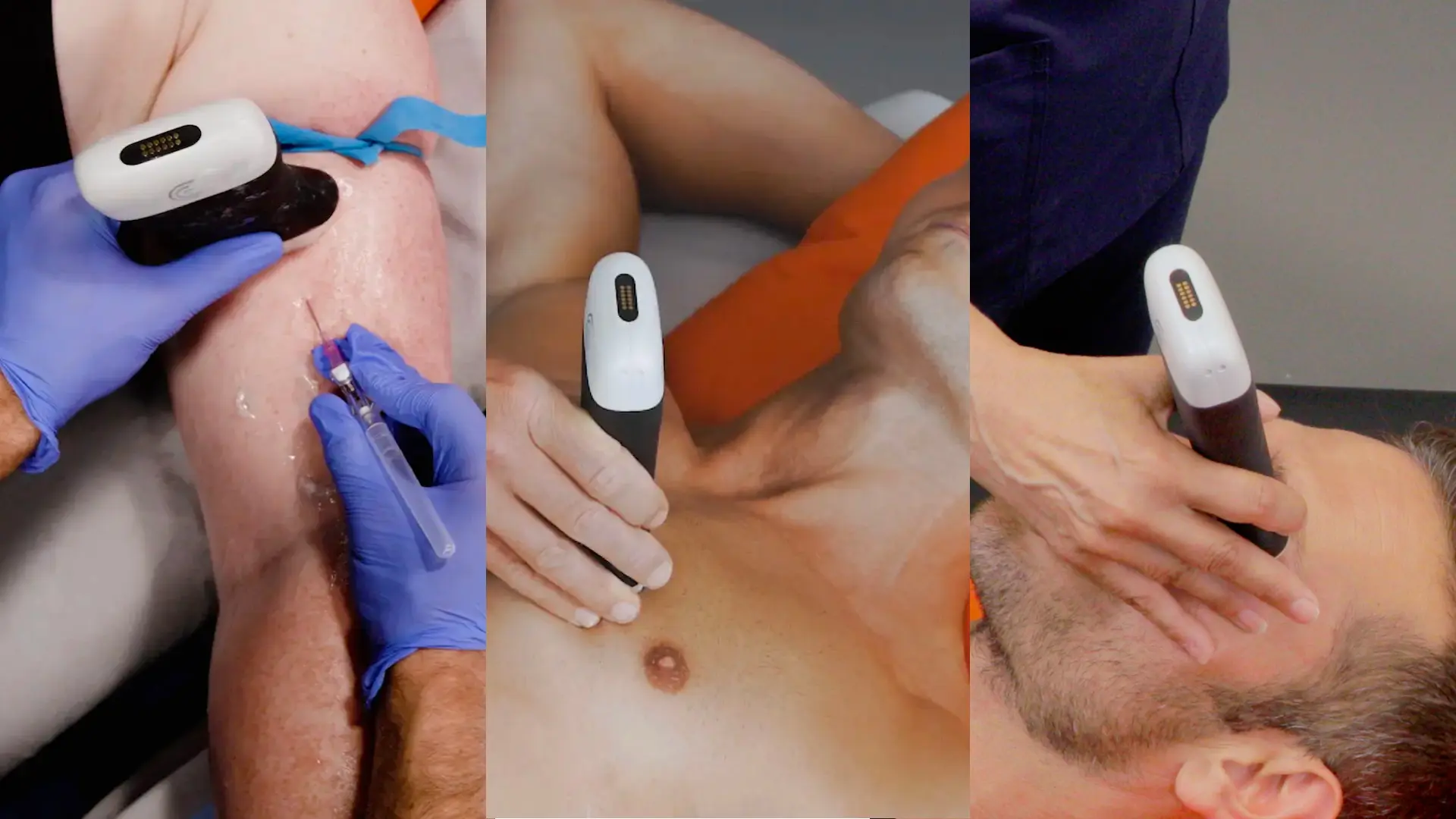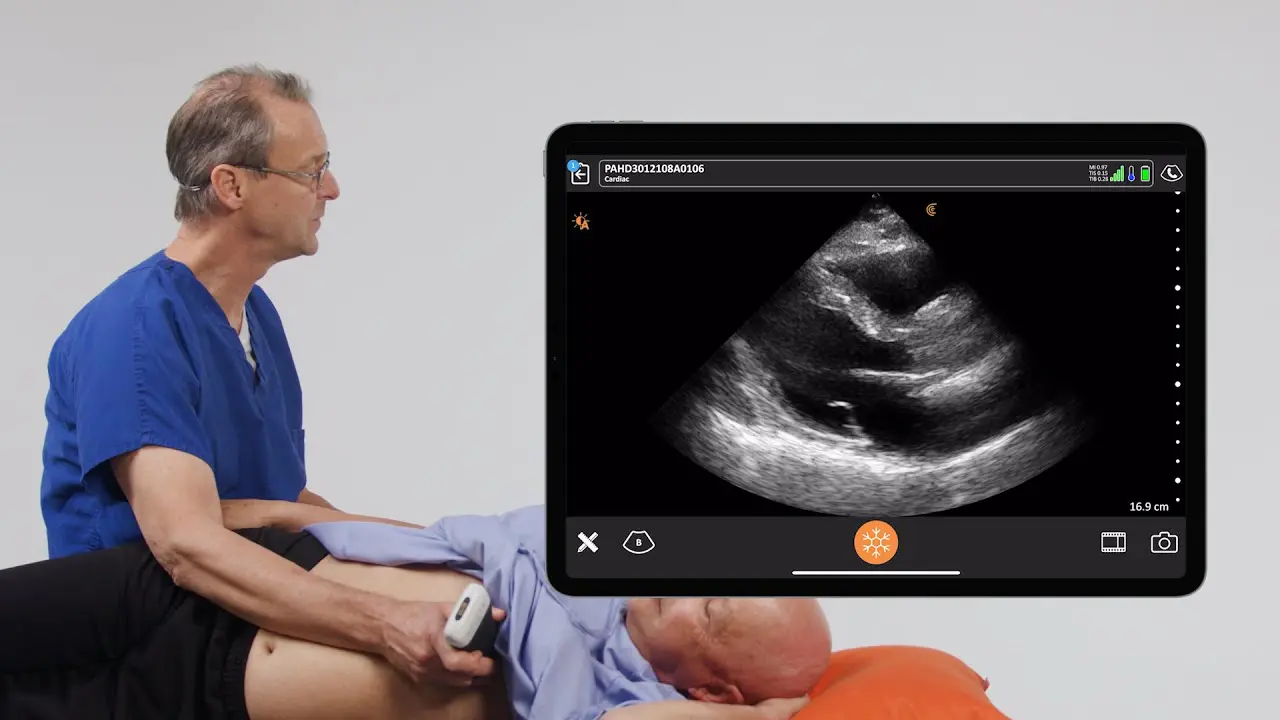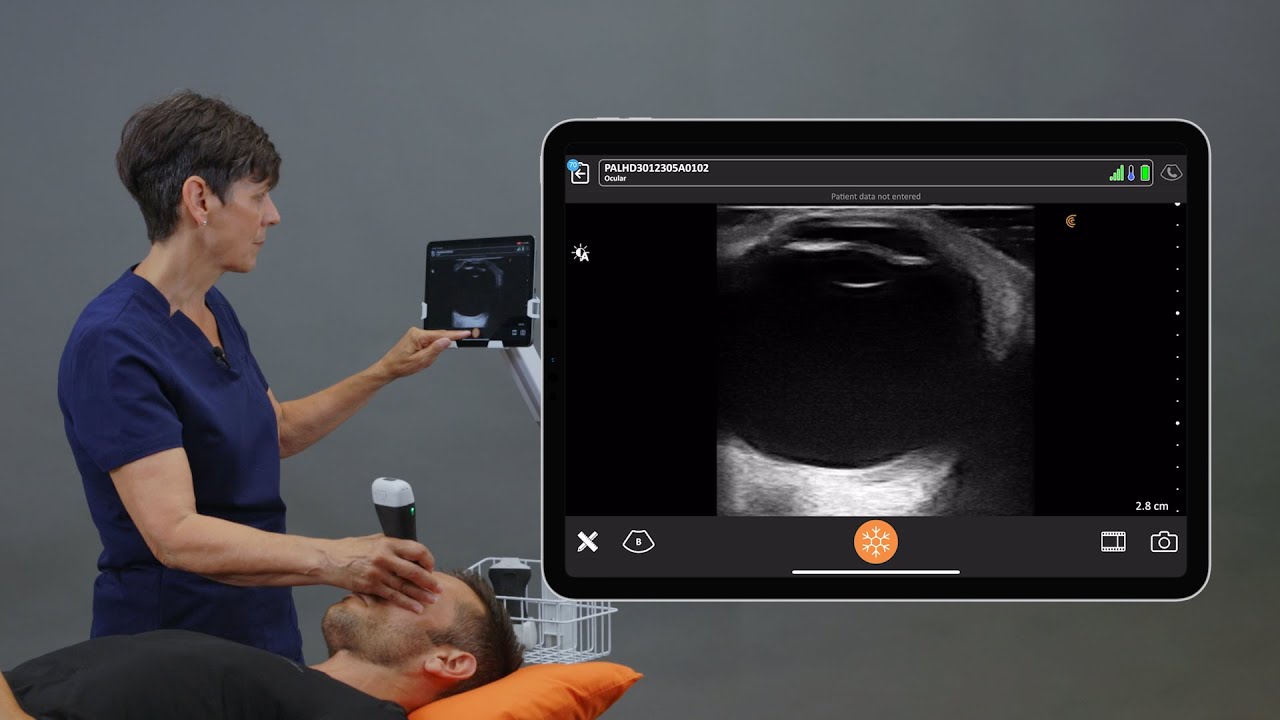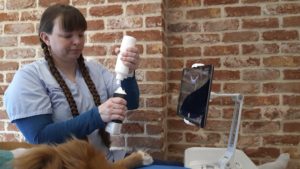This week we’re featuring another instructional POCUS (Point-of-Care Ultrasound) video with Dr. Oron Frenkel, an emergency physician, ultrasound educator, and Chairman of the Clarius Medical Advisory Board. In this one-minute video from our Clarius Classroom, Dr. Frenkel shows us how to quickly rule out the presence of an abdominal aortic aneurysm (AAA), which most affects male patients over the age of 65.1
This simple ultrasound exam for AAA can save the life of a patient presenting with unexplained hypotension, syncope, abdominal, or flank pain!
Dr. Frenkel uses the Clarius C3 HD curvilinear ultrasound scanner to perform the exam.
Five Steps to Preform an Abdominal Aortic Aneurysm (AAA) Ultrasound Exam
- Start by placing the scanner in a transverse orientation, with the indicator to the patient’s right, just at the xyphoid in the midline.
- Apply gentle pressure to see the prevertebral shadow and a clear view of the aorta in the middle of the screen.
- Adjust the depth to keep the aorta in the midline as you slide towards the patient’s feet, while watching for signs of dilatation.
- You can eyeball the measurement by watching the dots on the side of the screen.
- Slide down until you identify the iliac bifurcation to ensure there are no signs of an abdominal aortic aneurysm.
An abdominal aortic aneurysm measures 3 cm or greater. It is most commonly found in men with a history of smoking who are between 65 to 75 years of age.
Clarius is the ideal ultrasound system for clinicians who are new to ultrasound. With high-quality imaging and an AI-driven app, it’s almost as easy to use as your smart phone.
Learn more about how easy it is to learn and use the Clarius C3HD multipurpose ultrasound scanner for point-of-care ultrasound exams by requesting an ultrasound demo today.
If you’re interested in seeing more ultrasound video tutorials on Clarius Classroom, we invite you to subscribe to our Facebook, Twitter, LinkedIn, Instagram or YouTube channel for alerts.
- Article published in December 2019 in BMC Cadiovascular Disorders: Prevalence of abdominal aortic aneurysm and associated lower extremity artery aneurysm in men hospitalized for suspected or known cardiopulmonary disease
